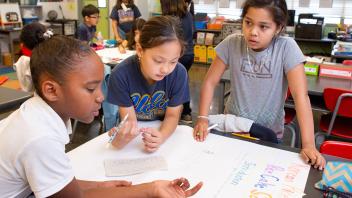When our son was young, a special holiday treat was an outing to see a live performance. Theater, dance, symphony — we tried it all. And during his time off from school, we’d visit art museums all over town. It certainly had an impact on our son but far too many children don’t have easy access to the arts or arts programs for any number of reasons.
So let’s integrate the arts into a child’s daily life, and where better to start — with potentially profound outcomes — than in schools.
Visual and performing arts combined with traditional school subjects make a good combination and — with a bit of teacher training — are powerful when integrated into daily academic activities. Research supports that a great deal of good growth happens.
In an increasingly complex and technology driven world, the need to think outside of the box has never been more apparent. The arts enhance young people’s ability to address issues and topics and more mundane subjects with heightened focus and involvement.
It’s clear: if you enjoy what you’re doing, you do it better; and the arts make learning pleasurable and help create better students.
A recent white paper of results from a research study done by the Kennedy Center’s Arts in Education confirms that. It details the results of a longitudinal research that examined the creativity and student engagement of 4th and 5th grade students in schools around the DC metropolitan area.
The study examined students’ creativity and engagement from three distinct perspectives: students, teachers and parents. The results clearly support the improvement of student performance as a result of the arts in content areas.
“Not only do students in [the arts-integrated] program see the influence of the arts in non-arts subjects, and produce more and original and creative ideas, but their teachers notice and encourage this creative ideation…” Further, teachers report that their students are not only more intellectually curious and excited about the school work, but “apply more effort and grit during their attempts” to do school projects and assignments. Even parents noted that their children were more likely to tackle tough problems and were more tolerant of other perspectives.
There are lots of practical tips and anecdotal evidence that the arts work with English Language Learners (ELLs) and very practical advice for classroom — sure to benefit all classrooms. Arts integration is an approach to make 21st century skills and learning a reality for children regardless of how readily they have access to live performances and the visual arts.

